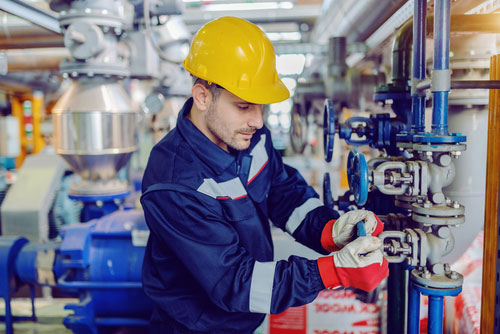Written by Occupli Safety Consultant Jake Bumpus

Legionella is a genus of water-borne bacteria which can be found in practically all natural water sources. Exposure to a specific species, Legionella pneumophila, can result in a pneumonia-type illness called Legionnaire’s Disease, which can be fatal.
Legionella bacteria can grow and multiply in any domestic or industrial water system, and the rate of growth is likely to increase given certain conditions. The temperature range where Legionella bacteria will multiply is between 20 – 45°C, and so it is important that water systems that can produce these temperatures are well managed and monitored. Stagnant areas of a system are also of particular concern, as legionella is predominantly sessile (i.e. prefers to grow in fixed locations, such as biofilms) and so when systems are not being regularly used, the lack of flowing water increases the likelihood of legionella growth. Understanding the properties of legionella informs us about the most effective remediation activities required if legionella is detected after testing.
Firstly, we should confirm the level of legionella detected from the positive sample. If the sample results were less than 1000 cfu/l, then it may be appropriate to first resample the redundant water shower area to confirm the results. If the sample results again show the presence of legionella in this area, then it is likely further remedial action is required.
From a legionella management perspective, the safest option may be to remove the redundant showers entirely, making sure to remove all supply pipework back to the main branch (i.e. removing all dead legs on that part of the water system). If the redundant showers cannot be removed immediately, then the shower heads should be removed, disassembled, and disinfected. The showers should also be flushed on a weekly basis, with records kept of this flushing regime for 5 years.
It would also be prudent to disinfect the entire water distribution system connected to the shower area, as it is possible that the redundant pipework has back-contaminated other parts of the system. Disinfection of the system could be done thermally (also known as a hot flush), raising the temperature of the water at the calorifier to 70°C, and then circulating this hot water around the system for at least one hour. Alternatively, chemical disinfection could be used, which would generally be done by specialist contractors using a suitable chemical disinfectant, such as chlorine or chlorine dioxide.
Under the Safety, Health and Welfare at Work (Biological Agents) Regulations 2013 and 2020 there are specific legal requirements for controlling biological agents, including Legionella. These requirements include;
- Risk assessments should be carried out to assess the risk of all hot and cold water system
- Exposure should be prevented where a risk is identified.
- Implementation of an effective Legionella Control Programme.
- Adequate training and instruction should be provided with respect to risk and precautions.
Occupli Consultancy offer a full suite of Legionella risk services with the main objective being to ensure that the health and safety of people in the workplace is maintained to the highest of standards, in keeping with applicable Irish legislation.
Learn More about the services that Occupli Consultancy provide in this area.
Similar Topics:
- Planning a Return to your workplace? You may be starting to think how can we return safely? This brief guide can help you plan and give you an idea of some of what needs to be considered based on current information. <span”>Learn More
- Management and Control of Legionella. What is Legionnaires’ disease and what are the health effects? Learn more
- Legionella Risk Assessments Learn More

